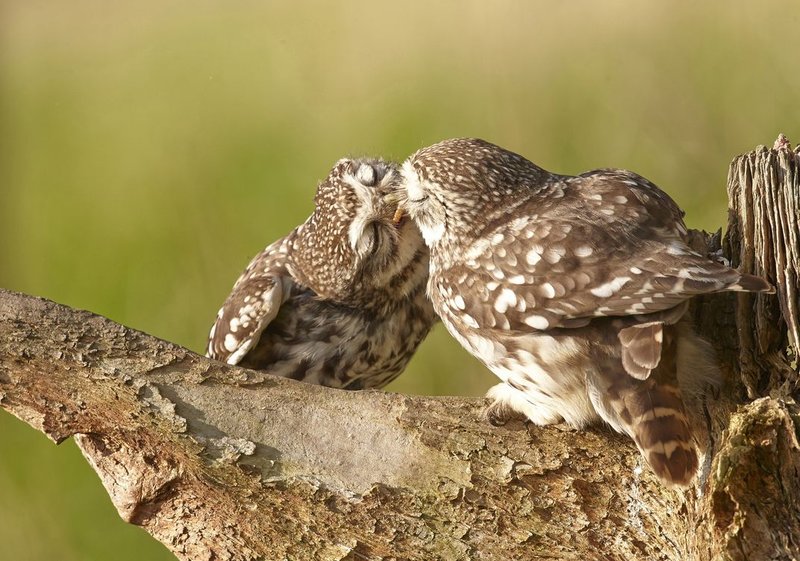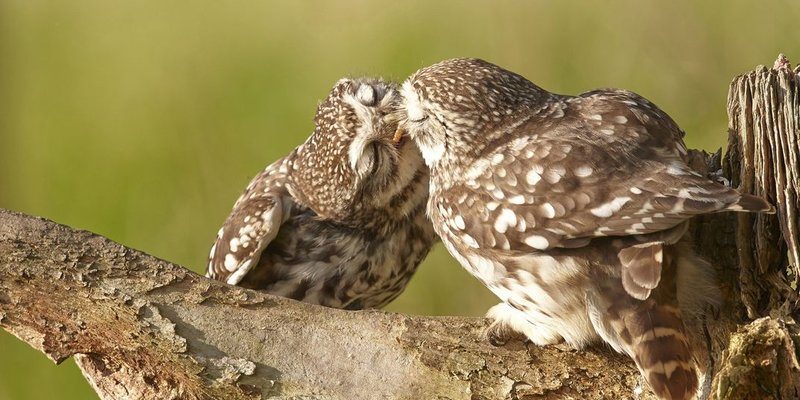
Just like how we might ask someone out on a date over coffee, owls have their unique ways of wooing potential partners. From intricate displays of affection to strategic territory calls, each species has its quirks. So, let’s dive deep and explore how these feathered nocturnal hunters go about securing their mates.
The Role of Calls in Owl Courtship
Owls are renowned for their vocalizations, and their calls play a crucial role in their courtship rituals. Each species has its distinct sounds that serve various purposes, including attracting mates and defending territory.
During the breeding season, male owls become particularly vocal. They hoot and call out in a sequence that’s almost like a serenade. Honestly, it’s their way of saying, “Hey, I’m here, and I’m ready to mingle!” This vocal performance not only showcases the male’s strength and health but also helps him establish a prime territory. The louder and more compelling the call, the more attractive he becomes to potential mates.
Female owls listen closely to these calls. They often choose mates based on the quality of their vocalizations. A well-timed, powerful hoot can communicate strength and fitness, something female owls are instinctively drawn to. It’s like choosing a partner in the dating world based on their confidence and charisma.
Dancing Displays: The Visual Aspect of Mating
Just when you thought it was all about the sounds, here comes the visual flair! Many owls also engage in physical displays to impress their potential mates. This is where the courtship dance comes into play.
Male owls will often puff out their feathers, spread their wings wide, and perform a series of elaborate movements. It might look a bit clumsy from our point of view, but to an owl, it’s a captivating display of strength and agility. Imagine a peacock fanning its feathers; it’s all about showcasing what they’ve got.
During these displays, male owls might also perform short flights, swooping down and then rising back up to show off their flying skills. This isn’t just for show; it’s also about demonstrating their fitness and ability to navigate the skies. In the owl world, showing off is serious business!
Once the mating rituals are successful, the next step is finding the perfect nesting site. Owls are very particular about where they want to raise their young, and that’s a big part of the courtship process.
Many species prefer to nest in tree hollows, abandoned nests of other birds, or even on cliff ledges. It’s like choosing an apartment—we all want a cozy and safe place for our future family! Male owls often lead the search, and they typically share this responsibility with their female partners.
When a female owl inspects a potential site, she looks for safety from predators and proximity to hunting grounds. A good location can mean the difference between thriving young owlets or a failed nesting attempt. Talk about pressure!
Territorial Displays: Defending Love
Territory isn’t just about finding a home; it also involves fiercely defending that home from intruders. During the courtship phase, male owls need to assert their dominance and ensure that their chosen nesting site remains uncrowded.
Males will engage in aggressive displays if they sense another male encroaching on their territory. This can include more vocal hooting, flying close to the intruder, and even physical confrontations. Their fierce protectiveness can be likened to a lion guarding its pride.
Here’s the thing: A strong, well-defended territory not only attracts mates but also ensures the safety of future offspring. It’s a balancing act that requires strength, strategy, and a little bit of drama.
Post-Mating Bonding: Nurturing the Connection
After the initial courtship and mating, the bond between the male and female owls doesn’t just vanish—it evolves. Many species engage in continued bonding behaviors that strengthen their partnership. This can include sharing food, preening each other’s feathers, or even cuddling up together.
Nurturing these connections is vital, especially as they prepare to raise their young. When both parents are engaged, it increases the chances of survival for the hatchlings. Owls that successfully work together are often better equipped to find food and protect their young from threats.
You might wonder if this behavior is instinctual or learned. In many cases, it’s a bit of both! Young owls observe their parents and pick up on the importance of teamwork and communication.
Unique Rituals of Different Owl Species
While many of the courtship behaviors we’ve discussed apply to various owl species, there are also unique rituals that distinguish them. Barn owls, for instance, are known for their heart-shaped faces and their dramatic swooping flight displays to impress their mates. Meanwhile, Great Horned Owls engage in intricate vocal duets that can resonate deeply through the forest.
Understanding these species-specific rituals adds another layer of appreciation for these remarkable birds. Each one has adapted its behaviors based on its environment and what works best for its survival and reproduction.
Ultimately, whether it’s the enchanting calls of a Barred Owl or the elaborate displays of a Eurasian Eagle-Owl, there’s no denying the richness of their courtship and mating rituals.
Final Thoughts on Owl Courtship
The courtship and mating rituals of owls are a captivating blend of sound, movement, and instinct. Watching these rituals unfold can feel like witnessing a mini-drama play out in nature. Each aspect, from the mesmerizing calls to the protective displays, serves a purpose in ensuring their species continues.
As we learn about these behaviors, it becomes clear just how complex and nuanced the lives of owls are. Next time you hear a familiar hoot in the night, think about the love story that might be unfolding nearby. It’s a reminder of how deeply intertwined all life is in the natural world. So, let’s keep our eyes and ears open to the magic that surrounds us, even in the most unexpected places.

